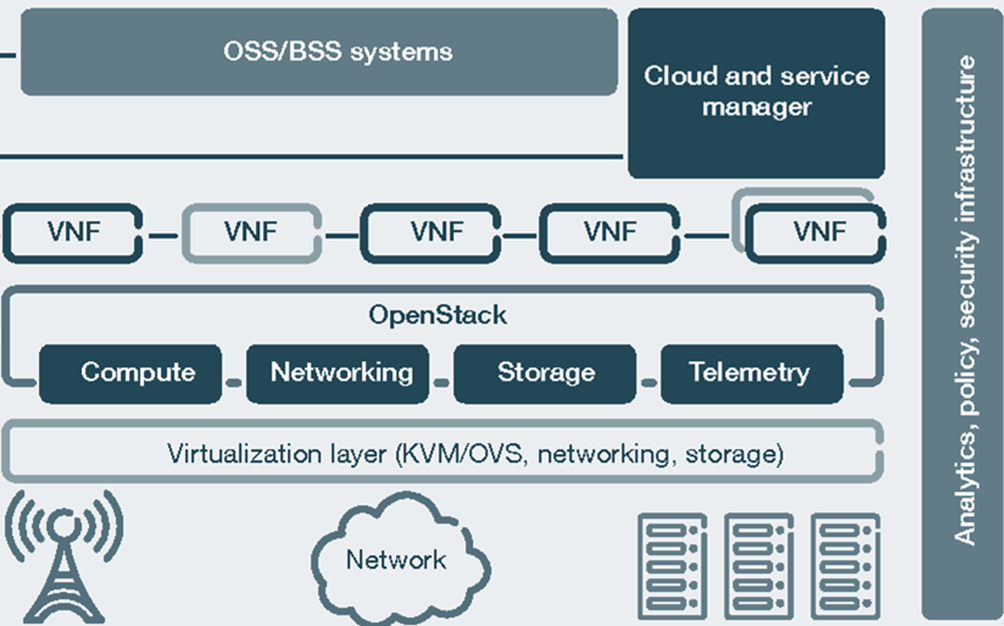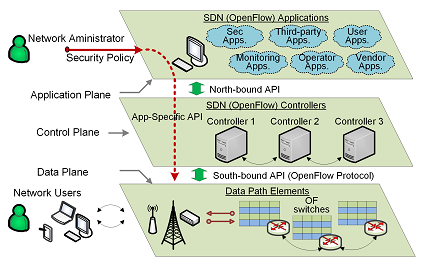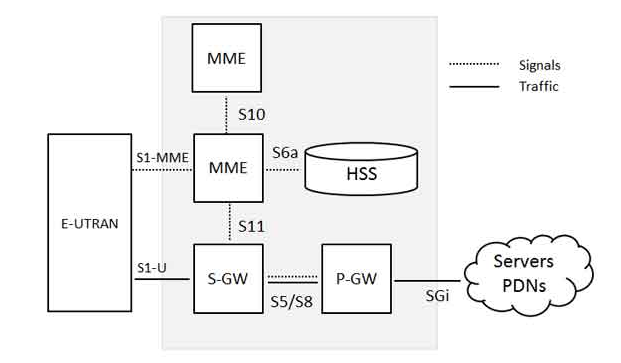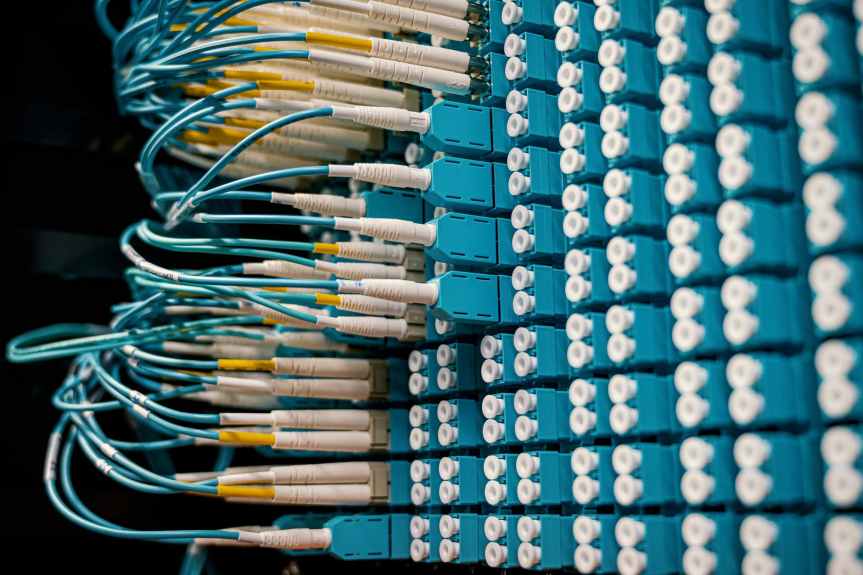- Network Virtualisation
- Software Defined Network (SDN)
- Network functions virtualization (NFV)
- IMS Virtual Network Functions (VNFs)
- OpenStack
Innovations in telecommunication today are largely driven by the advancements in Open source tech tools, standards and stacks. IP-based video and voice communication systems, Unified Communication systems such as Enterprise CPaaS platforms or even an external independent VoIP provider. The challenge for service providers today is that operating costs are growing faster than revenues. A large number of growing systems and vendors make operation a complex and expensive process.

Maintaining a network for communication service providers can be a complex and challenging task for several reasons:
- Network maintenance and upgrades: Service providers must constantly maintain and upgrade their networks to ensure that they are able to provide reliable service to their customers. This can involve replacing outdated equipment, installing new technology, and troubleshooting issues that arise.
- Managing traffic: Service providers must manage the traffic on their networks to ensure that it is distributed efficiently and that users are able to access the services they need. This can be a challenge, especially when the network is congested or there are unexpected spikes in traffic.
- Ensuring security: Communication networks are vulnerable to a variety of security threats, including hacking, malware, and denial of service attacks. Service providers must take measures to protect their networks and their customers’ data from these threats.
- Managing costs: Maintaining a communication network can be expensive, and service providers must find ways to manage costs while still providing high-quality service to their customers.
- Meeting regulatory requirements: Service providers must comply with a variety of regulations, including those related to privacy, data protection, and network security. Failing to comply with these regulations can have serious consequences, including fines and reputational damage.
Network Virtualisation
Network virtualization is the process of creating a virtual version of a network, including the hardware, network topology, and protocols, using software. This allows multiple virtual networks to be created and run on the same physical infrastructure, which can be used to isolate different network environments, test new network configurations, or provide network resources as a service.
NV = NFV + SDN
- NFV is SW-defined network functions with separation of HW and SW. Once network elements are SW-based, network HW can be managed as a pool of resources
- SDN is Interconnecting Virtual Network Functions with separation of control and data plane. Orchestration together with SW domain
There are several ways to implement network virtualization, including using software-defined networking (SDN) technologies, which allow the network to be controlled and managed using software, and using virtualization technologies such as virtual LANs (VLANs) or virtual private networks (VPNs) to create isolated network segments within a larger network. In a virtualized network the setup network functionalities are SW-based over COTS HW. Multiple roles can be made over same HW.

Network Virtualisation is an opportunity to build mouldable networks and redefine the architecture to make the infrastructure uniform.Virtual network services lowered CAPEX. Lessening dependencies on proprietary hardware and dedicated appliances.
- (+) Improves management of risk in a changing and ambiguous environment
- (+) capacity alteration Network flexibility
- (+) scalability
- (+) Service provisioning speed
- (+) holistic management:
- (+) granular security
There are several approaches to network virtualization that service providers can use, including:
- Network Function Virtualization (NFV): NFV involves virtualizing network functions, such as routers, firewalls, and load balancers, and running them on standard servers or other off-the-shelf hardware using virtualization platforms like VMware or OpenStack.
- Software-Defined Networking (SDN): SDN involves separating the control plane (which determines how data is routed through the network) from the data plane (which carries the actual data). This allows the control plane to be more flexible and responsive to changes in the network.
- Virtual Private Network (VPN): A VPN allows service providers to create virtual private networks (VPNs) over the public Internet, allowing them to securely connect users to the resources they need.
Service providers can use network virtualization to reduce costs, increase flexibility, and improve the scalability and reliability of their networks. Managed Service Providers (MSPs) can use a single viewpoint and toolset to manage virtual networking, computing and storage resources. However, implementing network virtualization can also be complex and require significant investments in hardware, software, and training.
Software Defined Network (SDN)
A software-defined network (SDN) is a networking architecture that uses software provisioning interfaces to control and manage the flow of traffic in a network. In an SDN, the control plane, which determines how data is routed through the network, is separated from the data plane, which carries the actual data traffic.
The main benefit of an SDN is that it allows the control of the network to be abstracted from the underlying hardware. This makes it possible to use software to dynamically configure the network, rather than relying on fixed configurations that are set using hardware switches and routers. SDN allows network administrators to easily and quickly change the way that data is routed through the network, which can be useful in a variety of scenarios. For example, an SDN can be used to optimize the flow of traffic in a data center, or to quickly reconfigure a network in response to changing traffic patterns or security threats such as DDoS.
SDN planes

- Control plane: The control plane is the part of the SDN that determines how data is routed through the network. It consists of a central controller, which is a software application that runs on a server, and a series of software agents that run on the network devices (such as switches and routers). The controller communicates with the agents using a protocol such as OpenFlow, which allows it to control the flow of traffic in the network.
- Data plane: The data plane is the part of the SDN that carries the actual data traffic. It consists of the network devices (such as switches and routers) that forward data packets through the network.
- Management plane: The management plane is the part of the SDN that is responsible for configuring and managing the network. It consists of a set of tools and applications that allow network administrators to monitor and control the network.
- Application plane: The application plane is the part of the SDN that consists of the applications that run on the network. These applications may include things like web servers, email servers, and database servers.
Software-defined network functions separates hardware and software. Once network elements are Software-based, network harware can be managed as a pool of resources. Separating route/switching intelligence from packet forwarding reduces hardware prices as routers and switches must compete on price-performance features.
SDN interconnects Virtual Network Function and orchestrated with SW domain. Enables separation of control and data plane.Setting up networks in an SDN can be as easy as creating VM instances, and the way SDNs can be set up is a far better complement to VMs than plain old physical networks. SDNs enable “network experimentation without impact”. Overcome SNMP limitations and experiment with new network configurations without being hamstrung by their consequences.
- Infrastructure Savings
- Reducing margin of Error : By eliminating manual intervention, SDNs enable resellers to reduce configuration and deployment errors that can impact the network.
- Operational Savings: SDNs lower operating expenses. Network services can be packaged for application owners, freeing up the networking team.
- Flexibility: SDNs create flexibility in how the network can be used and operated. Resellers can write their own network services using standard development tools.
- Better Management gives Better visibility into the network, computing, and storage
SDN protocols : OpenFlow, NETCONF. Its applications could be
- Bandwidth on Demand or test networks.
- Platform Virtualization for emulation/simulation of Network Nodes (BSS/MSS)
- SDN based Application Layer Traffic Optimization
- Intrusion Detection System that can interact with controller in terms of capturing packets, analyzing them for anomaly and sharing results real-time / near real-time with controller.
- Software-Defined Branch and SD-WAN
- IP Multi-Media Subsystem (IMS)
- Session Border Control (SBC)
- Video Servers
- Voice Servers
- Universal Customer Premises Equipment (uCPE)
- Content Delivery Networks (CDN)
- Network Monitoring
- Network Slicing
- Service Delivery
- Network security functions such as firewalls, IDS, IPS, vRR, NAT
Network functions virtualization (NFV)
NFV provides the basic networking functions and SDN assumes higher-level management responsibility to orchestrate overall network operations.
blog.equinix.com/blog/2020/03/10/sdn-vs-nfv-understanding-their-differences-similarities-and-benefits/
Network Function Virtualization (NFV) is a technology that allows network functions, such as routers, firewalls, and load balancers, to be implemented in software rather than hardware. This allows these functions to be run on standard servers or other off-the-shelf hardware, rather than dedicated appliances.

In an NFV system, network functions are implemented as software called Virtual Network Functions (VNFs). These VNFs are run on virtualization platforms, such as VMware or OpenStack, which allow multiple VNFs to be run on the same physical hardware. To use NFV, a service provider will first define the network functions that it needs in its network, and then create VNFs for each of these functions. These VNFs can then be deployed on virtualization platforms and used to build the service provider’s network.

One of the main benefits of NFV is that it allows service providers to be more flexible and agile in building and managing their networks. Because VNFs can be easily added, removed, or scaled up or down as needed, service providers can quickly respond to changes in demand or new business opportunities. NFV decouples network functions from proprietary hardware appliances (routers, firewalls, VPN terminators, SD-WAN, etc.) and delivers equivalent network functionality without the need for specialized hardware. And this way it helps service providers reduce costs, as they can use standard hardware rather than specialized appliances ( vendor lockins) to implement their network functions.
IMS Virtual Network Functions (VNFs)

A traditional appliance based IMS setup is dedicated to every single service, limited hardware/people/process leveraging.Some drawbacks of this approach is
- Not suited for Heterogeneous Networks that are evolving – inflexible
- Higher footprint cost per customer/service – high OPEX
- New services would need a new dedicated network thus high maintenance cost for solios of operation
Virtualisation will help to redesign the network architecture. In an IMS (IP Multimedia Subsystem) system, VNFs might be used to implement a variety of functions, including:
- Call Session Control Function (CSCF): The CSCF is responsible for managing call sessions and routing signaling messages between the IMS network and other networks.
- Media Gateway Control Function (MGCF): The MGCF is responsible for translating between different media formats, such as voice and video, and for controlling media gateways that connect the IMS network to other networks.
- Home Subscriber Server (HSS): The HSS is a database that stores information about IMS subscribers, including their profiles and service subscriptions.
- Serving Gateway (S-GW): The S-GW is responsible for routing data packets between the IMS network and the user’s device.
- Policy and Charging Rules Function (PCRF): The PCRF is responsible for enforcing policy decisions and charging rules for IMS services.
- IP-SM-GW (SMS Gateway): The IP-SM-GW is responsible for routing SMS messages between the IMS network and other networks.
- Presence Server: The presence server is responsible for managing presence information (such as availability status) for IMS subscribers.

Local Data Centre can rapidly build Network Intelligence rationalisation using Real Time Network Analytics on virtul STB, EPC, NAT, BRAS, PE, DHCP , PCRF etc. Core can be simplified and centralised with common and standard interfaces within core network and services to interact with OSS and BSS (standardized billing and fulfillment process).
OpenStack

OpenStack is an open-source virtualization platform. It enables service providers to deploy virtual network functions (VNFs) using commercial off-the-shelf (COTS) server hardware. OpenStack is widely used in the telecommunications industry, as it allows service providers to build and manage large-scale cloud computing environments that can be used to deliver a wide range of services, including virtualized infrastructure, NFV, and containerized applications. Applying Openstack to virtualize networks :
- Infrastructure as a Service (IaaS): OpenStack can be used to create and manage virtualized infrastructure, including compute, storage, and networking resources. This allows service providers to offer users the ability to spin up and manage virtual machines, storage volumes, and other resources on demand.
- Network Function Virtualization (NFV): OpenStack can be used as a platform for virtualizing network functions, such as routers, firewalls, and load balancers, and running them on standard servers or other off-the-shelf hardware.
- Container orchestration: OpenStack can be used to manage containerized applications, allowing service providers to deploy and scale applications more quickly and efficiently.


References:
- https://en.wikipedia.org/wiki/Software-defined_networking
- https://learn.microsoft.com/en-us/azure/virtual-network/virtual-networks-overview
- https://www.vmware.com/topics/glossary/content/virtual-networking.html#:~:text=Virtual%20Networking%20enables%20the%20communication,office%20and%20data%20center%20locations.
More to read :




































